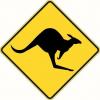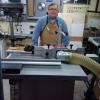Has anyone else here dealt with the jointer fence moving out of 90 degrees to the table? I planed and glued together two boards and then jointed and planed the assembled pieces to final dimensions only to find the boards to be thicker on one end and thinner on the other. The conclusion I reached is that as I passed the boards against the fence the fence moved out of 90 degrees. What is frustrating is the fence maintains its 90 degrees by balancing the thinnest portion of the fence on the jointer table when it should be the broad flat top that should serve as the base to the fence. It is backwards but there is no way to flip the fence over and use the flat top as bottom. I have searched and I cannot find if someone has made a better replacement fence or come up with a hack or trick to help keep the fence perpendicular to the jointer table. Any suggestions - I used a square and got it aligned but apparently too much pressure on the fence easily moves it out of alignment.




 Reply With Quote
Reply With Quote







